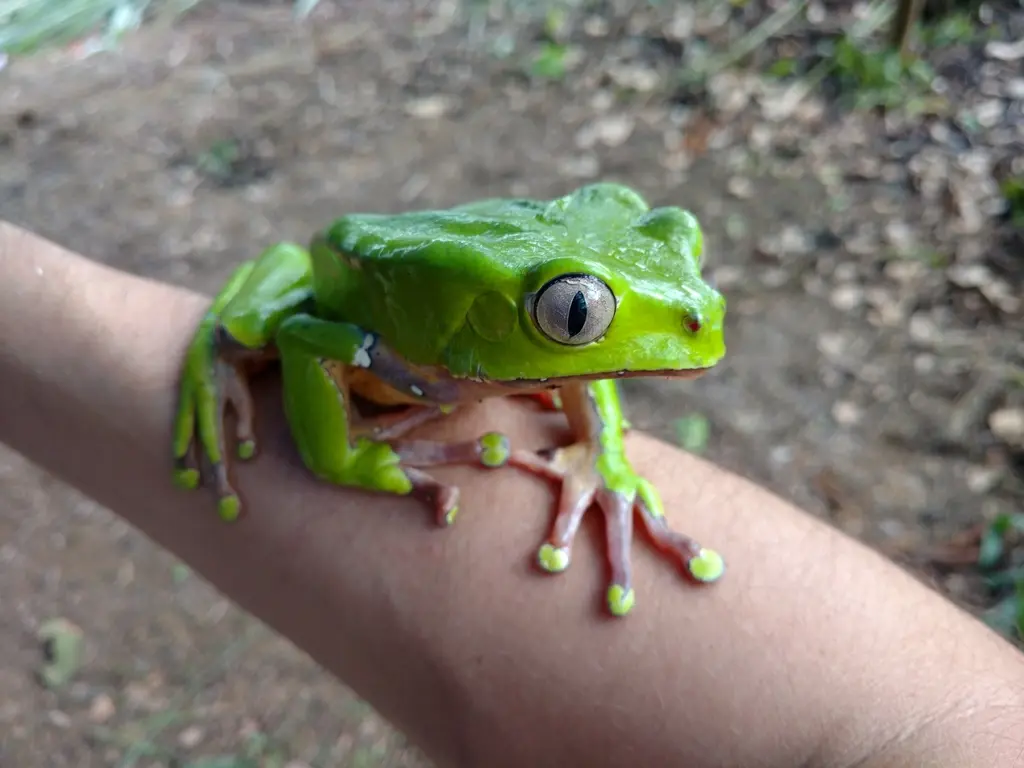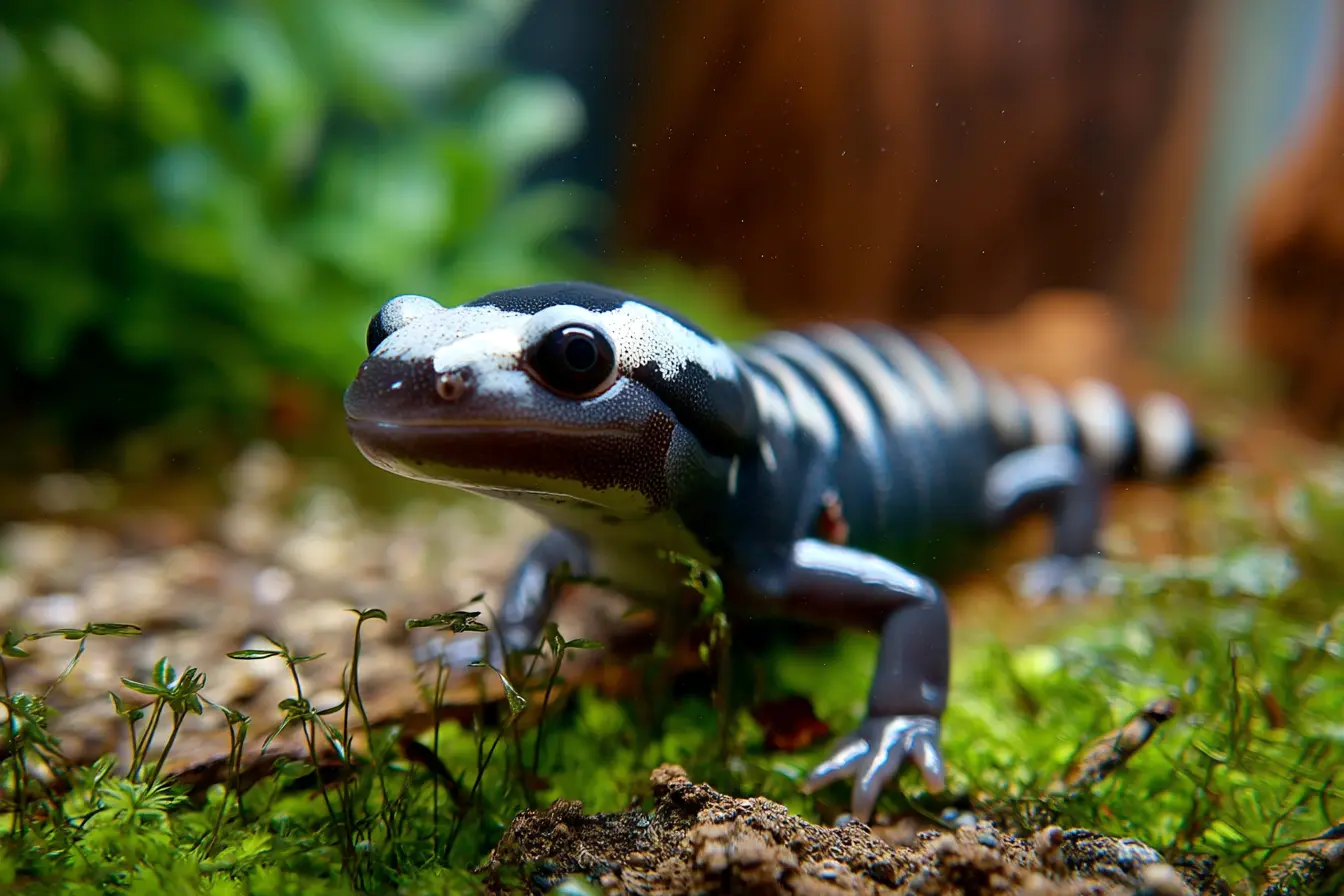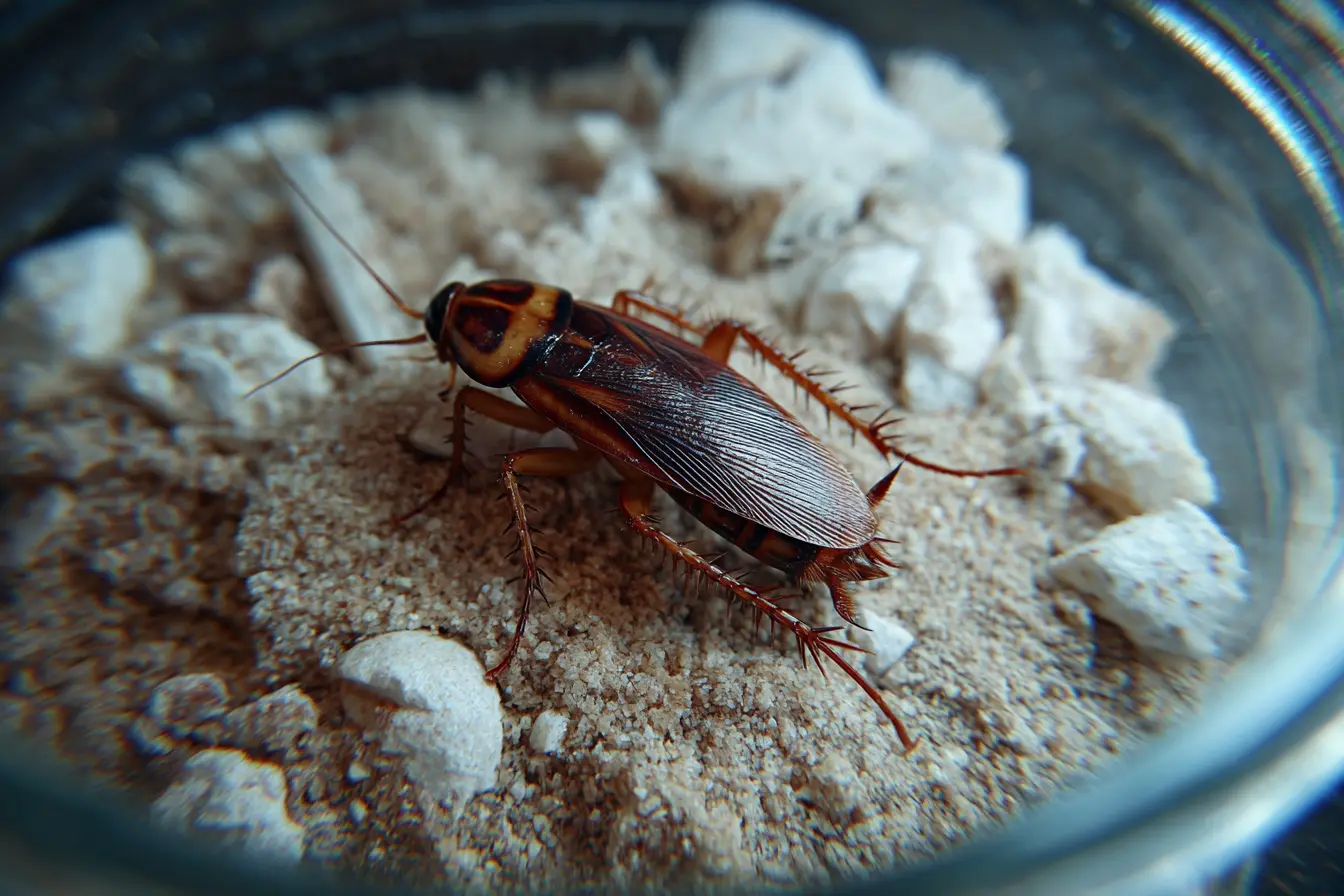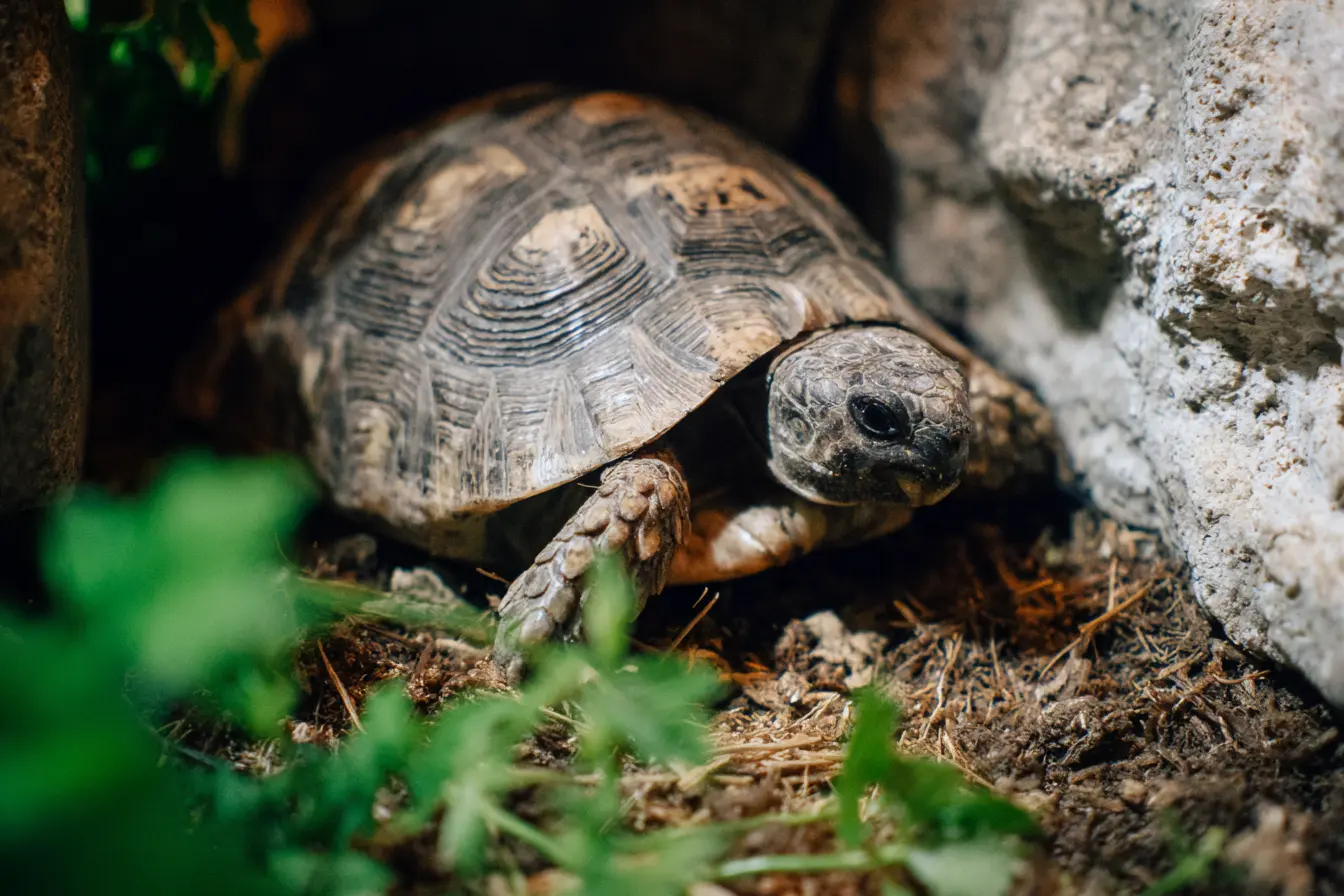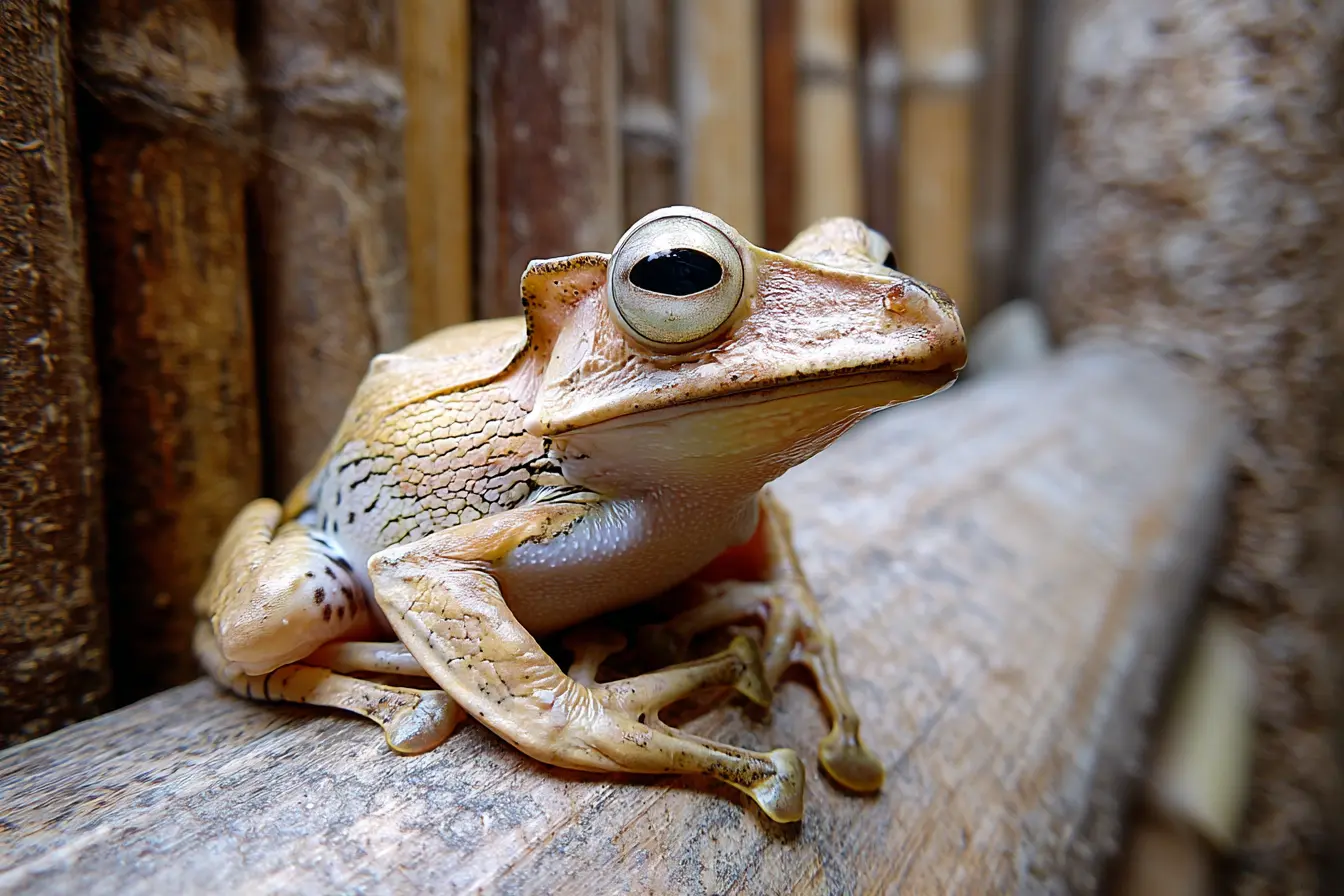
Keeping the Borneo Eared Frog: A Comprehensive Guide
The Borneo eared frog (Polypedates otilophus), also known as the file-eared tree frog, is a remarkable and visually striking amphibian native to the rainforests of Borneo. Recognised by the prominent ridges or “ears” on the sides of its head, this species is a tree-dwelling (arboreal) frog known for its climbing abilities, loud calls, and unusual appearance.
Due to their relatively hardy nature and fascinating behaviours, Borneo eared frogs can make rewarding pets for intermediate amphibian keepers. This guide covers everything you need to know about keeping and caring for this unique species in captivity.
Physical Characteristics
Size
- Adult Borneo eared frogs can reach 7–10 cm (2.8–4 inches) in length.
- Females are generally larger and more robust than males.
Lifespan
- In captivity, these frogs can live between 5 and 10 years with appropriate care.
Colouration and Texture
- Typically a warm yellowish-brown or tan, with dark brown or black banding across the limbs and body.
- Their smooth skin is contrasted by the jagged, “file-like” extensions behind the eyes which give them their name.
- Their long limbs and large toe pads make them exceptional climbers.
Sexual Dimorphism
- Females are larger and rounder.
- Males are more slender and may have a visible vocal sac during the breeding season.
Legal Considerations and Ethical Sourcing
Before acquiring a Borneo eared frog, ensure that local laws permit the ownership of exotic amphibians. Always purchase captive-bred individuals from reputable breeders. Avoid wild-caught specimens, as they contribute to habitat depletion and may carry diseases or parasites.
Housing and Enclosure Setup
As an arboreal species, Borneo eared frogs require vertical space and plenty of climbing surfaces to mimic their natural rainforest habitat.
Enclosure Size
- A tall 45 x 45 x 60 cm (18 x 18 x 24 inch) terrarium is suitable for a pair or small group.
- Vertical height is more important than floor space.
Substrate
- Use a moisture-retaining substrate such as:
- Coconut fibre
- Orchid bark mixed with sphagnum moss
- Bioactive substrate with leaf litter
- Ensure good drainage to prevent waterlogging.
Decor and Climbing Structures
- Provide multiple branches, cork bark, bamboo tubes, and sturdy live or artificial plants.
- Include broad-leaved plants for resting spots.
- A shallow water dish or small water feature is essential for soaking and maintaining humidity.
Temperature and Humidity
- Day temperature: 24–28°C (75–82°F)
- Night temperature: 20–23°C (68–73°F)
- Humidity: 70–85%, maintained by regular misting (at least twice daily)
- Good ventilation is important to prevent respiratory infections or mould.
Lighting
- A 12-hour light/dark cycle helps maintain a natural rhythm.
- UVB lighting (low intensity) is not strictly necessary but can benefit health and calcium metabolism.
- LED grow lights can be used to support live plant growth.
Diet and Feeding
Borneo eared frogs are insectivores and enjoy a varied diet of appropriately sized live prey.
Suitable Food Items
- Crickets
- Dubia roaches
- Black soldier fly larvae
- Locusts
- Small moths
- Occasional waxworms or silkworms as treats
Feeding Schedule
- Juveniles should be fed daily.
- Adults can be fed every 2–3 days.
- Prey should be gut-loaded and dusted with supplements.
Supplements
- Calcium with vitamin D3 should be used 2–3 times per week.
- A multivitamin supplement should be used once every 1–2 weeks.
Behaviour and Handling
Borneo eared frogs are mostly nocturnal and come alive at dusk. They are energetic climbers and may explore the enclosure actively at night.
Common Behaviours
- Rest during the day on vertical surfaces or tucked in foliage.
- Males may vocalise with loud, raspy calls—especially during breeding season or after misting.
- Capable of leaping large distances if startled.
Handling
- These frogs have delicate skin and should not be handled frequently.
- If necessary, handle with clean, wet hands or powder-free nitrile gloves.
- Wash hands before and after contact.
Health and Common Issues
Borneo eared frogs are relatively hardy, but improper husbandry can lead to health issues.
Common Health Problems
- Dehydration – from inadequate humidity.
- Skin infections – often due to poor hygiene or low air flow.
- Metabolic bone disease (MBD) – from calcium or UVB deficiency.
- Parasites – particularly in wild-caught or unquarantined frogs.
Preventative Care
- Maintain optimal temperature and humidity.
- Clean enclosure regularly and change water daily.
- Quarantine new arrivals.
- Provide a varied and well-supplemented diet.
Breeding Borneo Eared Frogs
Captive breeding is possible but uncommon and requires precise conditions.
Breeding Conditions
- Increase misting and simulate a rainy season to trigger breeding.
- Introduce males and females into a spacious enclosure with ample vertical space.
- Provide a large water feature or basin where eggs can be laid.
Reproduction
- Males vocalise to attract females.
- After mating, females lay clusters of eggs on vegetation or overhanging surfaces above water.
- Upon hatching, tadpoles fall into the water below and should be moved to a rearing tank with warm, clean water and plenty of oxygen.
Tadpole Rearing
- Feed tadpoles with boiled lettuce, spirulina, or finely crushed fish flakes.
- Metamorphosis occurs after 6–10 weeks.
Conclusion
The Borneo eared frog is a striking and rewarding amphibian that offers unique behaviours and dramatic looks for those ready to meet its specific needs. With a well-ventilated arboreal setup, appropriate humidity, and a varied insect diet, these frogs can thrive and even breed in captivity.
While they are not ideal for frequent handling, their nocturnal activity, vibrant appearance, and loud calls make them captivating display animals for dedicated amphibian enthusiasts. For those seeking a less common but manageable species, the Borneo eared frog is an excellent choice.
Vets near you
Speciality vets
- Aquatics vet specialists
- Birds vet specialists
- Camelids vet specialists
- Cats vet specialists
- Cattle vet specialists
- Deer vet specialists
- Dogs vet specialists
- Equines vet specialists
- Exotic vet specialists
- Goats vet specialists
- Pigs vet specialists
- Poultry vet specialists
- Sheep vet specialists
- Small Mammals vet specialists
- Wild vet specialists
